- Home
- Larry McMurtry
Custer Page 2
Custer Read online
Page 2
Particularly doubtful, in my opinion, is the famous cry “Hurrah boys, we’ve got them,” which Custer is supposed to have uttered when he saw the Indians. By the time he would have delivered this famous cry he must have known that something close to the reverse was true: they had him.
Indeed, by all reports, Custer entered this campaign without his usual bravado. On the morning of his departure from Fort Lincoln he was said to be subdued. Usually he was stimulated at the prospects of a fight.
When, with the battle nearly joined, his old enemy Benteen suggested politely that it might be best not to break up the troop, Custer merely said, “You have your orders.”
At least seven or eight native languages were spoken by participants in this battle. Their names, when they surfaced in white man’s parlance, would have surprised those participants if they had lived long enough to see them on marquees. Crazy Horse, Curly in his youth, was in tribal life Tashunca-uitco (Dancing Horse, Magical Horse), while Tatanka-Iyotanka was the tribal name for Sitting Bull. Both Sitting Bull and Geronimo learned to sign their marquee names, though even today few Apaches will tell you Geronimo’s tribal name: Goyakla, one who yawns, close, maybe, to the Spanish Jerome.
The tribal people believed, rightly perhaps, that giving a person your name gave him a certain power over you. And complicating the issue was the fact that the Indians sometimes held two names at the same time. Rock Forehead, the Cheyenne chief who warned Custer about going against the peace pipe, was also called Medicine Arrows, because he was the keeper of the sacred tribal arrows. The visit when this warning was given was just after the Battle of the Washita; Custer had been sent to soothe Cheyenne feelings, which he signally failed to do.
THE LATE HISTORIAN STEPHEN AMBROSE wrote a book on Crazy Horse and Custer in which he traced the parallels between the careers of these two famous warriors: the impetuous cavalryman and the elusive Oglala.
There is another man whose career has some uncanny parallels with Custer’s: the explorer and topographer John Charles Frémont, known popularly as the Pathfinder, though, in fact, he found few paths. He claimed, for example, to have discovered South Pass, the famous gateway through the Rockies that led to Oregon and California. In fact this route was used by the Overland Astorians well before Frémont, was well known to mountain men and trappers, and, of course, was used by the Indians forever. Frémont didn’t “find” it until he first went west in 1842.
CUSTER AND CRAZY HORSE FIGHTING BY KILLS TWO.
Frémont was trained as a topographer by the fine French student of landscape Joseph Nicollet, who achieved immortality, of a sort, through television. When Mary Tyler Moore, working girl of Minneapolis, flings her cap in the air while she is walking to work, she is standing in what is now Nicollet Mall.
Like Custer, Frémont had early success. Custer’s cavalry work during the Civil War made him a hero, whereas Frémont’s reports on his first two Western expeditions made him one of the most popular authors of his day.
Like Custer, Frémont married—indeed eloped with—an impressive and ambitious woman, Jesse Benton Frémont, daughter of Senator Thomas Hart Benton, of Missouri.
When things went south for the General, as Jesse called her husband, Jesse leapt to his defense, just as did Libbie Custer when her George, whom she also called General, was attacked from all sides. Libbie defended Custer for more than fifty years.
JOHN CHARLES FRÉMONT.
Early glory and lively wives were not the only things that Custer and Frémont had in common: another shared attribute was the ability to get so far and no farther. Custer never became a Grant, nor Frémont a Jefferson. Frémont’s high-water mark came in 1846, while leading his third expedition, which was more or less the reverse of what his orders charged him to do. In this he was just like Custer: orders meant nothing.
Frémont’s intent, on the third expedition, was simply to annex the whole of California, though at the time it belonged to Mexico.
At this point a high destiny seemed well within Frémont’s grasp; but then, as the historian Bernard DeVoto put it, things began to go ever so subtly wrong, just as they went less subtly wrong for George Armstrong Custer.
Frémont, mind you, had genuine gifts as a topographer. He saw, understood, and named the Great Basin; and he even managed to eliminate a ghost river that was supposed to cross the Sierras but didn’t. He also named the Golden Gate, and may have been the first person to suggest that the Napa Valley might be a fine place to grow grapes.
Frémont’s troubles came because he was naive about politics; Custer’s difficulties were usually the result of carelessness. His abandonment of Major Joel Elliott and eighteen of his men at the Battle of the Washita—supposedly his one great victory against the plains Indians—turned the entire officer corps against him. Many of them testified against him at his court-martial. Most of these officers were his own age: as his career went, so did theirs.
Frémont, for his part, went so far as to defy the authority of General Stephen Watts Kearny, who had been sent west to drive out the Mexicans, after which he would run California as a territory. Frémont fatally misjudged Kearny’s mettle: Kearny took him back to Washington and court-martialed him. Like Custer he was convicted on various counts, including mutiny, and this despite desperate lobbying on the part of Jesse and her father.
Custer’s gall was also massive. After the Washita he found that he missed his wife, and simply rode off in search of her. She finally turned up in Fort Riley, Kansas.
Frémont made mistakes involving the security of his men that were very much in the Custer mode. On his disastrous fourth expedition he proposed to survey a railroad line through the heart of the Rockies in midwinter. This was mainly to please his father-in-law, who owned a home on the 39th parallel and reasoned that it would be a fine place for a railroad.
MAJOR JOEL ELLIOTT.
Frémont’s favorite guide on his first three expeditions was the very experienced Kit Carson, who was not available (or perhaps not willing), so Frémont took instead the rascally mountain man Old Bill Williams, of whom Kit Carson said: “Nobody who knows him walks ahead of Bill Williams in the starving times.” On this trip Williams failed to get them through the massif. Ten of Frémont’s men died in the mountains: it was his Little Bighorn. He himself retreated to Kit Carson’s home in Taos; he wrote his wife how pleasant it was to be in Kit Carson’s snug house, sipping hot chocolate as the winter deepened. Meanwhile the starving times had come for his men. Old Bill Williams survived the chill but was soon dispatched by a party of Utes, his mortal enemies, whom he had defrauded many times.
Frémont had done exactly what Custer was to do: abandoned his men to a cruel and unnecessary death.
Both men had genuine abilities and had the good sense to play to their strengths. The maps that were published with Frémont’s reports were useful to travelers in the Rockies for decades to come. Regrettably he never bothered to do his final assignment, which was to survey the rivers flowing east out of the Rockies, particularly the Arkansas and the Red.
Custer, of course, did not live to grow old, but Frémont, a very handsome man, seemed to grow more handsome as he grew sadder.
Abraham Lincoln apparently let Frémont’s splendid appearance convince him that he was a soldier, which he was not. Lincoln gave him two important assignments—the Department of Missouri, for one—and Frémont immediately flubbed both of them, losing both territory and men. Lincoln finally shuttled him off to West Virginia; rather than serve under General John Pope, Frémont resigned.
The final parallel with Custer was political ambition. Frémont had it and took it nearly to the presidency. How politically ambitious Custer was is hard to say. He may have told some Indian that he would be the next White Father: we’ll never know.
Frémont, though, was a better than fair politician. In 1856, though losing to James Buchanan, he made a good showing. The Radical Republicans ran him again in 1864 but he pulled out due to lack of funds. He made money for
a while, but rarely kept it. Given a fine home in California, he and Jesse soon had to sell it. They were often bankrupt and the General was even convicted of bank fraud in France.
Within the military structure Custer was undoubtedly ambitious. He left Fort Abraham Lincoln bitter that the overall command had been given to General Alfred Terry rather than himself. He may not have realized that he was not a particularly good Indian fighter, though the term Indian fighter would always be linked to him. He was much better at fighting his Civil War foes, who had trained in the same disciplines, at the same schools. But the Indians fought in a different way, and Custer never really got himself prepared for it.
Which man had the sadder lot is not easy to say. Custer’s life was abruptly snuffed out by two Sioux or Cheyenne bullets. Almost every venture Frémont undertook failed. He philandered endlessly—Jesse grew fat and sad. He died while doing a friend a favor—he brought some flowers and placed them on a grave in Brooklyn. The grave was the friend of a friend. He would have done better to have stuck to his first love, topography; he had a real aptitude for landscapes. But, as a mere mapmaker, could he have attracted Jesse? He tried for glory and found a little bit of it.
GEORGE ARMSTRONG CUSTER WAS OF Hessian stock, Custer being probably a corruption of Kuester. Until he arrived at West Point his life was almost entirely rural. He was born in New Rumley, Ohio, and was raised there and in Monroe, Michigan. His father, Emmanuel, was a farmer and a blacksmith. Eventually there were twelve in his family, death and remarriage achieving that total.
Custer had many failings, but lack of family feeling was not among them. He loved his brother Tom, and his stepsister Lydia Kirkpatrick, the only living human to exercise much control over the boy or the man.
CUSTER AT SIXTEEN.
MATTHEW BRADY PORTRAIT OF LIBBIE CUSTER.
In a famous episode while he was courting Libbie Bacon he showed up on her doorstep very drunk and loudly profane. Lydia was visiting and proceeded to tear into him with such force that he was never known to touch liquor again.
His beloved brother Tom Custer died with him at the Little Bighorn, as did his brother Boston, a nephew, and a stepbrother.
He also deeply loved his mother. Their partings were terrible. Libbie, once she became a daughter-in-law, found them almost intolerable; she dreaded accompanying her husband on his trips home.
TOM CUSTER.
Custer’s first biographer was an English dime novelist named Frederick Whittaker; his primary virtue was that he wrote fast. He began his book while Custer was still alive and managed to kick it into print by the end of 1876. If Custer read even a small sampling of it he probably laughed his head off: Whittaker was to Custer as Parson Weems was to Washington. (The great editor Milo Milton Quaife was the first to make that observation.)
GEORGE CUSTER.
GEORGE ARMSTRONG CUSTER HAD UNUSUALLY perfect timing as he moved from one stage of his career to another, the exception being June 25, 1876, when his timing could not have been worse.
West Point itself he seemed to treat as a lively teenager might a summer camp: a good place to have fun. His academic record was dismal, and his demerits numerous; he finished 34th out of 34.
But another example of his timing was that he matriculated in the class of 1861, which allowed him to be shoveled right into the Army of the Potomac. (He fought in the first battle of the Civil War, and also in the last.)
The Civil War made Custer: for him it was four years of sport. Nowhere does he mention the 750,000 dead, or the agony of the field hospitals, the shattered nation, the husbandless widows, the childless mothers, their best hope buried; a great national tragedy that left many promising lives unlived. In that war the world got the first taste of the destructive power of modern weaponry, the great war engines that showed their full power fifty years later, in the carnage of World War I and later World War II.
But Custer was lucky, given his talents, to have the perfect war waiting for him when he graduated.
When he began to demonstrate his flare, the generals he was then introduced to were astonished at first by his youth. George McClellan called him a “mere boy.” Custer hung around West Point until mid-June, arriving in Washington just in time to fight in the Battle of Bull Run. He was very active during the whole conflict, bringing in the first prisoner by the 5th Cavalry; and, years later, seeing a rebel soldier holding a towel as a signal of surrender, he came in with one of the last.
And Custer’s dash and flare were genuine, besides which they made the generals look good, Sheridan particularly.
Barely mentioned by historians is the dark side of Custer’s war: the execution without trial of Confederate guerrillas. Sheridan asked him to do this, and he did it without noticeable loss of sleep.
CUSTER AFTER THE BATTLE OF FIVE FORKS.
A famous story from the war has Custer chasing a Confederate on a fine thoroughbred; he rode an ornate saddle and was also carrying an expensive sword. Custer, after asking him twice to surrender, killed him, keeping the horse, the saddle, and the sword. When taxed about the ethics of the matter, Custer always said it was the rebel’s fault; after all, he had asked twice.
LIEUTENANT JAMES BARROLL AND SECOND LIEUTENANT CUSTER, MAY 31, 1862.
HARPER’S WEEKLY: CUSTER PRESENTS CAPTURED BATTLE FLAGS.
CUSTER, HIS BROTHER TOM, AND WIFE, LIBBIE.
CUSTER CIRCA 1863.
CUSTER ON HIS WEDDING DAY.
CUSTER WITH BEARD, 1868.
CUSTER WITH HIS HORSE, COMANCHE.
CUSTER WAS FAR FROM BEING a gracious or easy commander of men. On marches he stayed aloof, or with his officers, making little effort to promote camaraderie. Though his general’s rank was brevet, meaning temporary, he soon began to behave as if it were permanent. He insisted on traveling with a cook, which meant a cookstove, which caused many delays. He generally favored black cooks, though on the Black Hills/Yellowstone expedition of 1873 he took a white cook.
After Custer’s abandonment of Major Joel Elliott and his men on the Washita, very few officers wanted much to do with him, though most of them liked Libbie—Captain Benteen being an exception.
Early in the Custers’ marriage they were sent to Texas. The War Department was a little worried about Mexico, where the drama of Maximilian was being played out. The trip is worth mentioning because of Custer’s utter disregard of civilized behavior. Libbie was carried to her buggy in the morning so that the heavy East Texas dew would not wet her fine slippers. The Custers ate well but the men were starving. Two who killed and cooked a crippled calf were flogged for their temerity. What Libbie thought of this is not recorded.
If Custer signally lacked something it was what the rest of the world calls conscience. He had no capacity for empathizing with the pain and suffering of others.
Conditions being what they were, desertion was a constant problem, both in Texas or Kansas, sometimes running as high as 50 percent. Custer treated the deserters savagely, often sending his brother Tom to shoot them. Those who made it back to the forts faced cruel punishment.
Grant saw through Custer, though he did acknowledge that the man would fight. Grant would fight and so would Lee. Auchinleck didn’t, at least not enough to satisfy his boss, Winston Churchill.
If one happened to be in a war, the Custer model was useful, especially if maturity could somehow be injected into the model. The “mere boy” McClellan saw in 1862 was just as single-minded in 1876—only then he was in the position to lose the lives of 250 men, which is essentially what he did.
SINCE MUCH OF CUSTER’S CAREER concerned itself with the plains Indians, it might be worth sketching in the political context in which he worked, 1860 to 1875 or thereabouts.
In the decade of the 1840s immigration along various routes began to increase rapidly. All of a sudden it was Oregon or bust, and quite a few did bust. Frémont’s report on his first expedition to the Rockies in 1842 prompted settlers to set out for the glorious West. The report spoke of what he claim
ed to be his great find, South Pass, and told of rafting mountain rivers in his famous rubber boat. The California Gold Rush, coming just at the end of the decade, increased immigration tenfold. Diseases spread by the Forty-niners decimated some of the Indian tribes, the Comanche-Kiowa peoples particularly.
The lure of gold proved irresistible. Along the Platte River, the Oregon Trail—called by Indians the Holy Road—took tens of thousands west. Overland guidebooks, on the order of Captain Randolph Marcy’s The Prairie Traveler, soon began to flourish, guiding immigrants from one water hole to the next. Some of these guides, many of them printed on small local presses, are worth their weight in gold today. The immigrants could hardly wait to harvest the plenty they knew to be in Oregon, but, unhappily for these newcomers, there existed a large and hostile group of people who didn’t want them to get there at all, the so-called plains Indians, who were appalled as wagon train after wagon train crossed what they had supposed to be their land. These people lived communally, fed by the overabundant buffalo, and they liked it that way. Soon, though, to their astonishment, even the buffalo began to change their migration patterns so as to avoid being shot by the powerful rifles of the invaders.
The plains Indians were very gifted hunter-gatherers. As long as they had the buffalo they were about as secure as nomads can be. They were understandably furious about the wagon trains, and their fury vented itself on the whites, many of whom were not only killed but mutilated in inventive ways. The whites were horrified: they were used to fighting but not to butchery. The government decided that something must be done, so the head soldiers decided to try a council, which had worked fairly well with the Senecas and Mohawks and other Eastern Indians; Fort Laramie, on the Platte, was made the site of this famous council and the year was 1851. The big question was whether the plains Indians would actually come. There had been one big Western council, held in what is now Oklahoma. George Catlin painted many of the Comanches who showed up at this one at Fort Laramie.

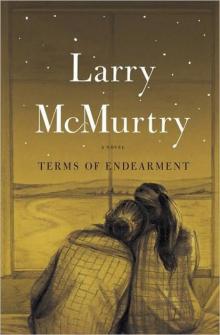 Terms of Endearment
Terms of Endearment Some Can Whistle
Some Can Whistle All My Friends Are Going to Be Strangers
All My Friends Are Going to Be Strangers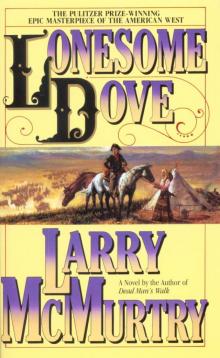 Lonesome Dove
Lonesome Dove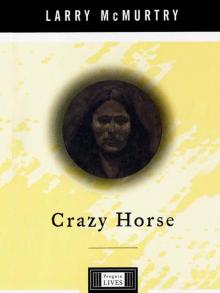 Crazy Horse: A Life
Crazy Horse: A Life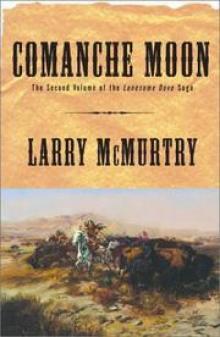 Comanche Moon
Comanche Moon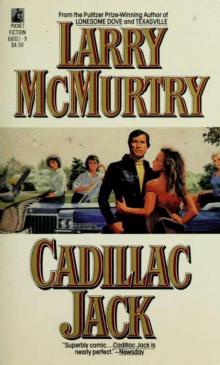 Cadillac Jack
Cadillac Jack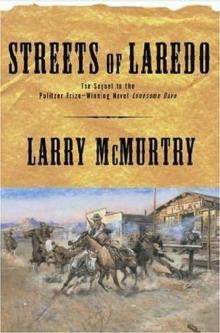 Streets of Laredo
Streets of Laredo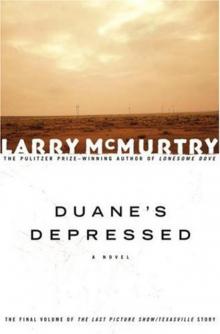 Duane's Depressed
Duane's Depressed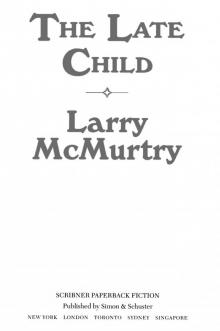 The Late Child
The Late Child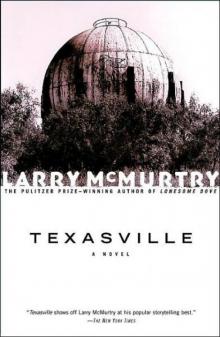 Texasville
Texasville Rhino Ranch
Rhino Ranch Pretty Boy Floyd
Pretty Boy Floyd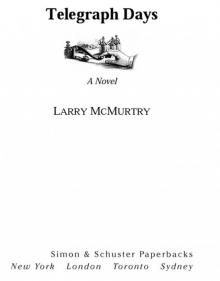 Telegraph Days
Telegraph Days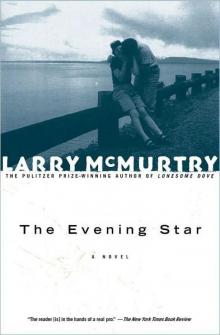 The Evening Star
The Evening Star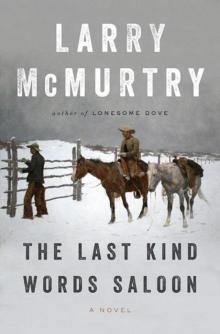 The Last Kind Words Saloon
The Last Kind Words Saloon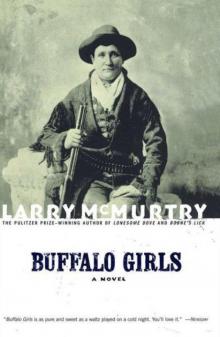 Buffalo Girls
Buffalo Girls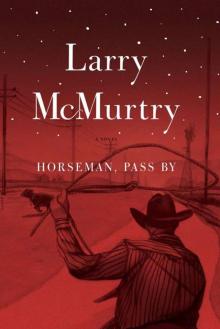 Horseman, Pass By
Horseman, Pass By Boone's Lick
Boone's Lick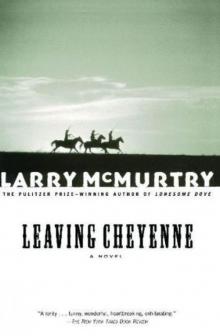 Leaving Cheyenne
Leaving Cheyenne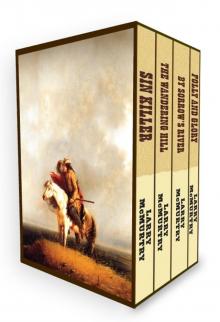 Sin Killer
Sin Killer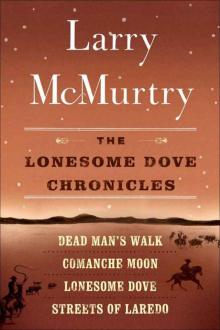 The Lonesome Dove Chronicles (1-4)
The Lonesome Dove Chronicles (1-4)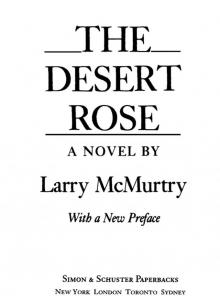 The Desert Rose
The Desert Rose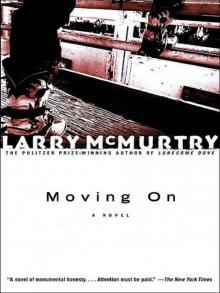 Moving On
Moving On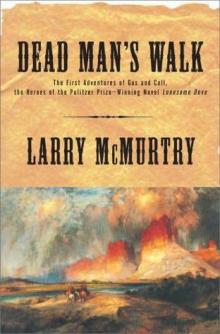 Dead Man's Walk
Dead Man's Walk The Last Picture Show
The Last Picture Show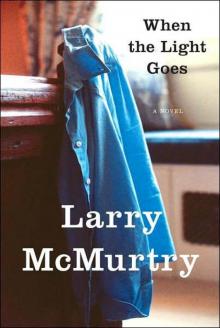 When the Light Goes
When the Light Goes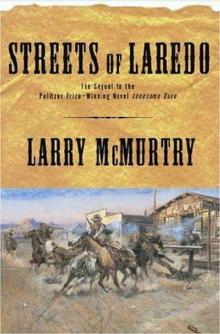 Streets Of Laredo ld-2
Streets Of Laredo ld-2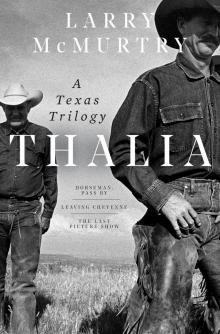 Thalia
Thalia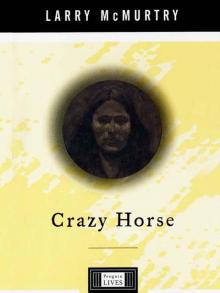 Crazy Horse
Crazy Horse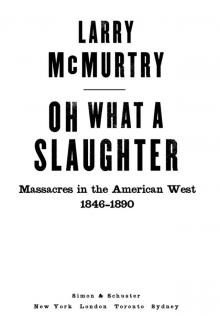 Oh What a Slaughter
Oh What a Slaughter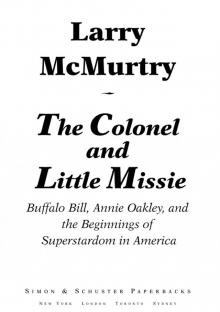 The Colonel and Little Missie
The Colonel and Little Missie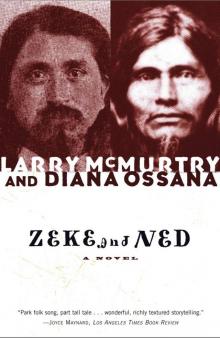 Zeke and Ned
Zeke and Ned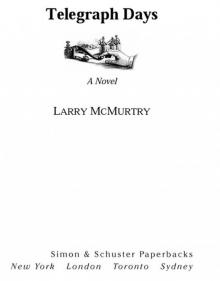 Telegraph Days: A Novel
Telegraph Days: A Novel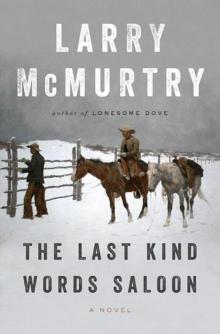 The Last Kind Words Saloon: A Novel
The Last Kind Words Saloon: A Novel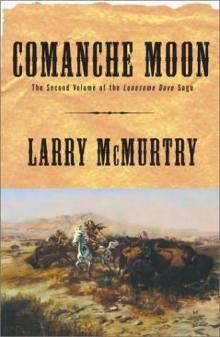 Comanche Moon ld-4
Comanche Moon ld-4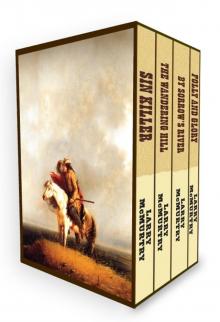 The Berrybender Narratives
The Berrybender Narratives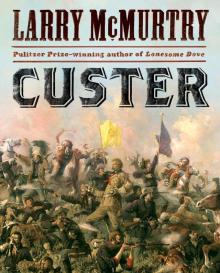 Custer
Custer